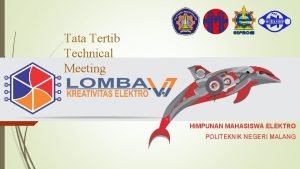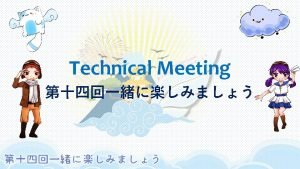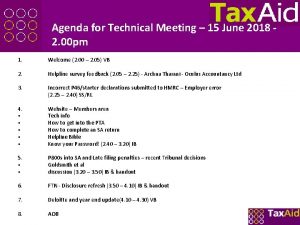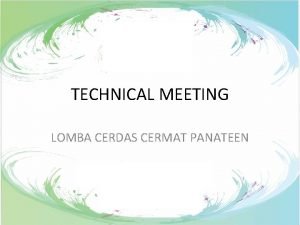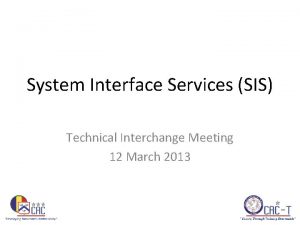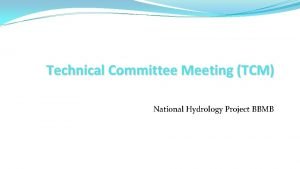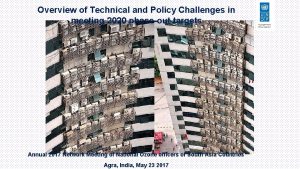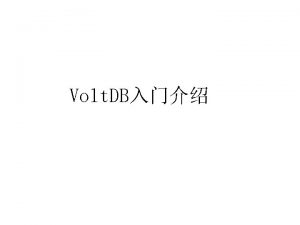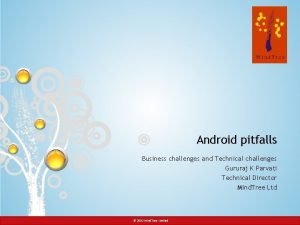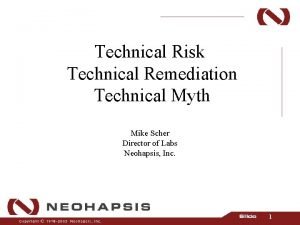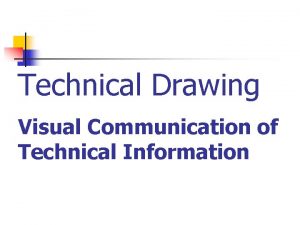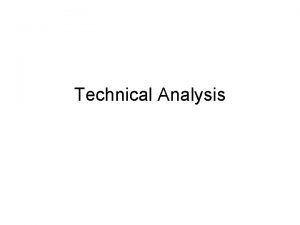Overview of Technical and Policy Challenges in Meeting













- Slides: 13

Overview of Technical and Policy Challenges in Meeting 2020 Phase Out Targets on RAC Servicing Sector - Leakage Control The Annual 2017 Network Meetings of the National Ozone Officers of the South Asia Countries Agra, India, 23 -26 May 2017 Niro Tohi PREC Institute Inc. , Japan

Estimated f-gas emissions in Japan CFCs/HCFCs have been successfully reduced. HFCs emissions have been increasing rapidly and are estimated to double in 2020 as compared to emissions in 2011 from RAC (approx. 80% of total). Estimated f-gas emissions from refrigeration and air-conditioning in 2020

Estimated f-gas emissions in Japan It was found out that refrigerant leakage from the equipment in use is going to be much more than expected. (mil t-CO 2) 50 40 30 at disposal in use 15 その他中型冷凍冷蔵 Middle sized refrigerators 機器 Packaged ACs for buildings ビル用PAC 10 Commercial ACs その他業務用 5 家庭用エアコン Room ACs 別置型ショーケース Separated-type Showcases 0 2020 BAU Outdoor Refrigerator Large refrigerators 大型冷凍機 20 20 10 Small refrigerators 小型冷凍冷蔵機器 25 Leakage 漏洩量 Estimated f-gas emissions and leakages from RAC by type in 2020 (BAU) Indoor Showcase Separated-type Showcase

Main causes of refrigerant leakage from RAC equipment in use Poor maintenance Aging • Users often do not grasp the situation of leakage and cause(s), and repeat refilling without repairing.

Responsibilities of Industrial/Commercial RAC Users Proper management of RAC equipment • Installation at appropriate places/maintaining the appropriate installation environment. • Inspection of equipment

Inspection frequency required by the law in Japan Users must carry out simple inspection of all specified products more than once in 3 months. Inspection items Outdoor units Visual inspection and checking for abnormal noises etc. Frosts on heat exchanger Oil seeping Temperature inside Corrosion Damages, abnormal noises & vibrations

Inspection frequency required by the law in Japan For certain specified products, Periodic Inspection must be carried out by a person with specialized knowledge. Category Refrigerators Air conditioners Capacity 7. 5 k. W or larger Inspection frequency more than once/year 50 k. W or larger more than once/year 7. 5 k. W or larger (smaller than 50 k. W) more than once/3 years

Example of Periodic Inspection Direct method Spray bubbling liquid to detect leakage spots Electronic leak detectors

Example of Periodic Inspection Indirect method Using a check sheet, check whether the operation values of the running devices are deviated from the daily/normal values and diagnose the possibility of leakage.

Record-keeping of inspection Users must keep the record of inspection, the history of repair and filling/recovery of refrigerants. Related records must be disclosed upon request of a maintenance operators etc. at the time of equipment maintenance.

Guideline on fluorocarbon leakage inspection and repairing for commercial RAC equipment The guideline has been developed and published by RAC association (JARAC) JARAC: Japan Association of Refrigeration and Air-Conditioning Contractors

Summary Responsibilities of industrial/commercial RAC users for refrigerant leakage control • Simple inspection (more frequent) • Periodic inspection (more specialized) • Record-keeping In order to supervise how equipment are managed, the information of equipment and users/managers is necessary.

Thank you for your attention
 What is meeting and types of meeting
What is meeting and types of meeting Types of meeting
Types of meeting Tata cara technical meeting lomba
Tata cara technical meeting lomba Rundown technical meeting lomba
Rundown technical meeting lomba Technical meeting agenda
Technical meeting agenda Technical meeting lomba cerdas cermat
Technical meeting lomba cerdas cermat Technical interchange meeting template
Technical interchange meeting template Oas technical meeting
Oas technical meeting Tcm technical committee meeting
Tcm technical committee meeting For today's meeting
For today's meeting Proposal kickoff meeting agenda
Proposal kickoff meeting agenda Opportunities and challenges in media and information ppt
Opportunities and challenges in media and information ppt Overview of transcription and translation
Overview of transcription and translation Data quality and data cleaning an overview
Data quality and data cleaning an overview


